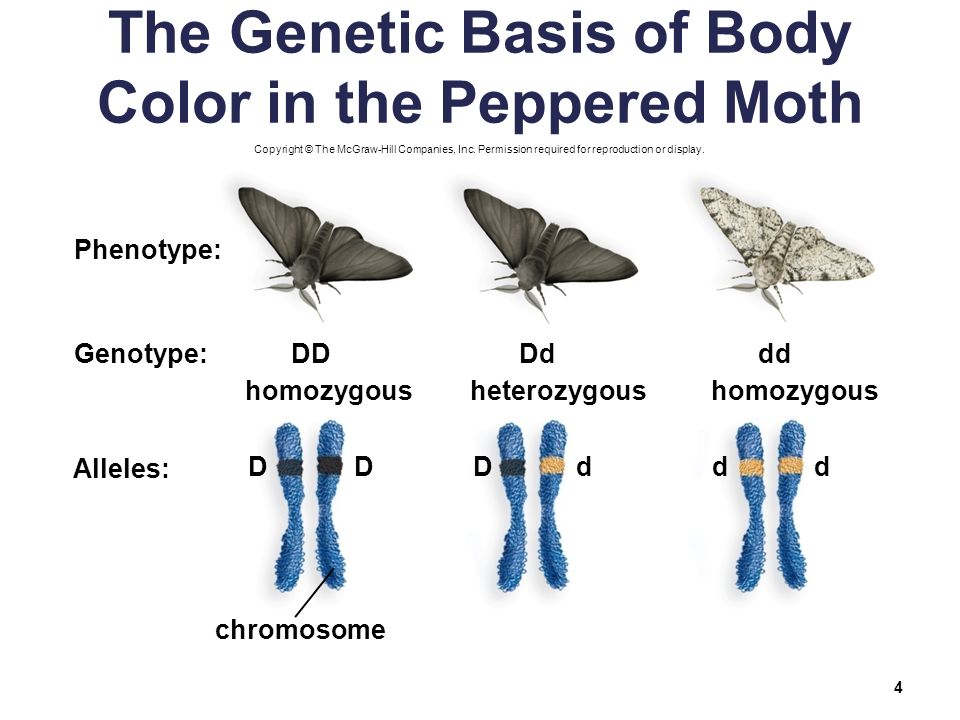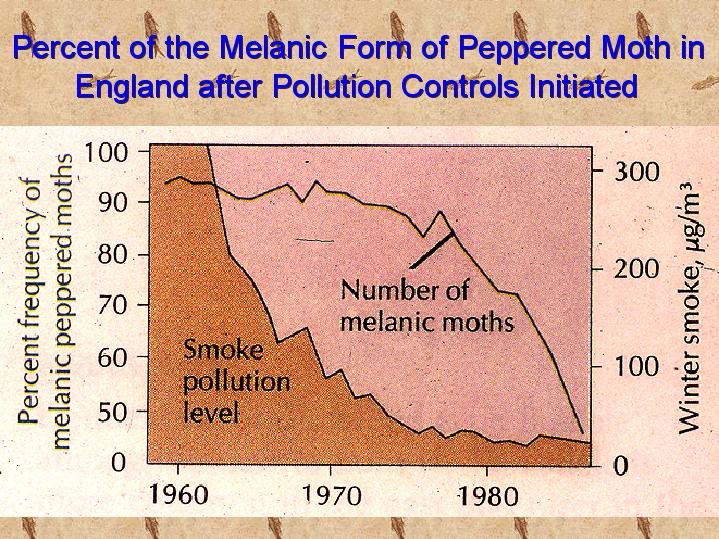Industrial melanism is a much discussed topic in evolution. Is it in any way associated with mutation?
3 Answers
Mutation produces natural variation in the species.
Explanation:
The peppered moth has varying degrees of pigmentation - from lightly coloured to nearly completely black. This variation is produced by mutation of existing genes into forms that are more or less active than the initial gene regulating pigmentation.
When a version of a trait gives a survival advantage, we call it an adaptation. During the industrial revolution, the trees near industry became black with soot - the black moths (thanks to mutation) had an adaptation for this change in the environment as they were best camouflaged in the dirty habitat. The frequency of this gene in the population increased until the species had changed from being traditionally light coloured to being mostly dark in under 100 years. This is called directional selection , as a population shifts toward a particular trait being exaggerated.

(Source: https://courses.lumenlearning.com/wmopen-biology2/chapter/the-evolution-of-populations/)
There is no effects of mutations on Biston Betularia
Explanation:
Biston Betularia commonly called the peppered moth has two forms the white and the black forms due to melanism. Both forms are autosomal dominants. This means that both forms can coexists within a population.
Before the industrial revolution in England produced large amounts of pollution the white form predominated but the black form was also present.
During the industrial revolution the pollution caused the black form of the peppered moth to have an evolutionary advantage. The peppered moths adapted to the changing environmental conditions. During the industrial revolution the black form predominated the population of peppered moths.
After the industrial revolution the pollution problem in England was reduced. The white moth regained its status as the dominate form of the peppered moth population.
This is an example of evolutionary adaptation sometimes called microevolution. It is not an example of mutational evolution because no mutation was observed to occur. Both forms existed before, during and after the environmental changes due to pollution. Mutations had no effect on the Biston Betularia because there was no mutational change in the peppered moths.
A single mutation on chromosome 17 of Biston bitularia once upon a time in the past has given rise to melanic form.
(https://www.nature.com/news/2011/110414/full/news.2011.238.html)
General population of Biston bitularia in Britain existed in light colour, except few melanic forms. First mention of melanic form was reported in 1848, from Manchester.
The mutant allele is dominant.

-
When a mutation first appears in the gene pool, its allele frequency remains low. It provides a new variation to the organism.
-
This mutation that we are talking about, helped the peppered moths in certain industrial places to adapt better in a changed polluted environment.
-
As this mutation gave rise to an adaptive phenotype in nineteenth century England where coal was fuelling industries, in and around Manchester the melanic forms became naturally selected (as they matched the soot covered tree trunks to avoid preying birds).
-
Hence allele frequency of the dominant mutation increased in gene pool and most moths in nature appeared to be melanic. By 1895, 98% moths were melanic in Manchester and Birmingham.
-
So appearance of a favourable mutation in gene pool led to appearance of a new phenotype, which was eventually selected by nature. Thus industrial melanism is an example of directional selection and adaptive evolution.
-
It also provides us an insight: that pre-adaptive characters must remain present in gene pool in the form of favourable mutations so that organisms carrying one/more of such mutations derive an advantage in a changed environment.
Please note, that the percent of melanic form in peppered moth population decreased significantly in rural areas of England as air pollution is now largely controlled.


